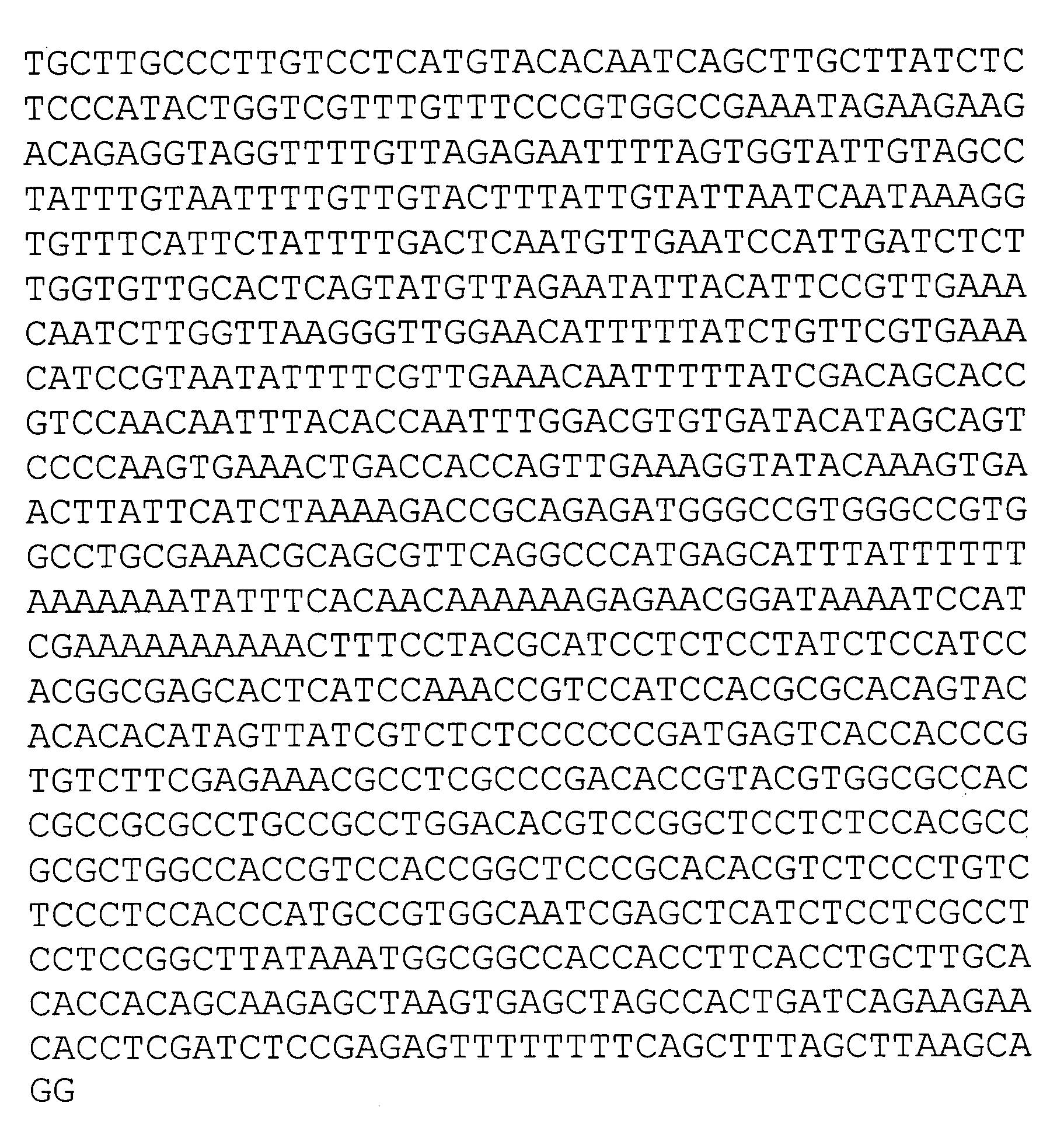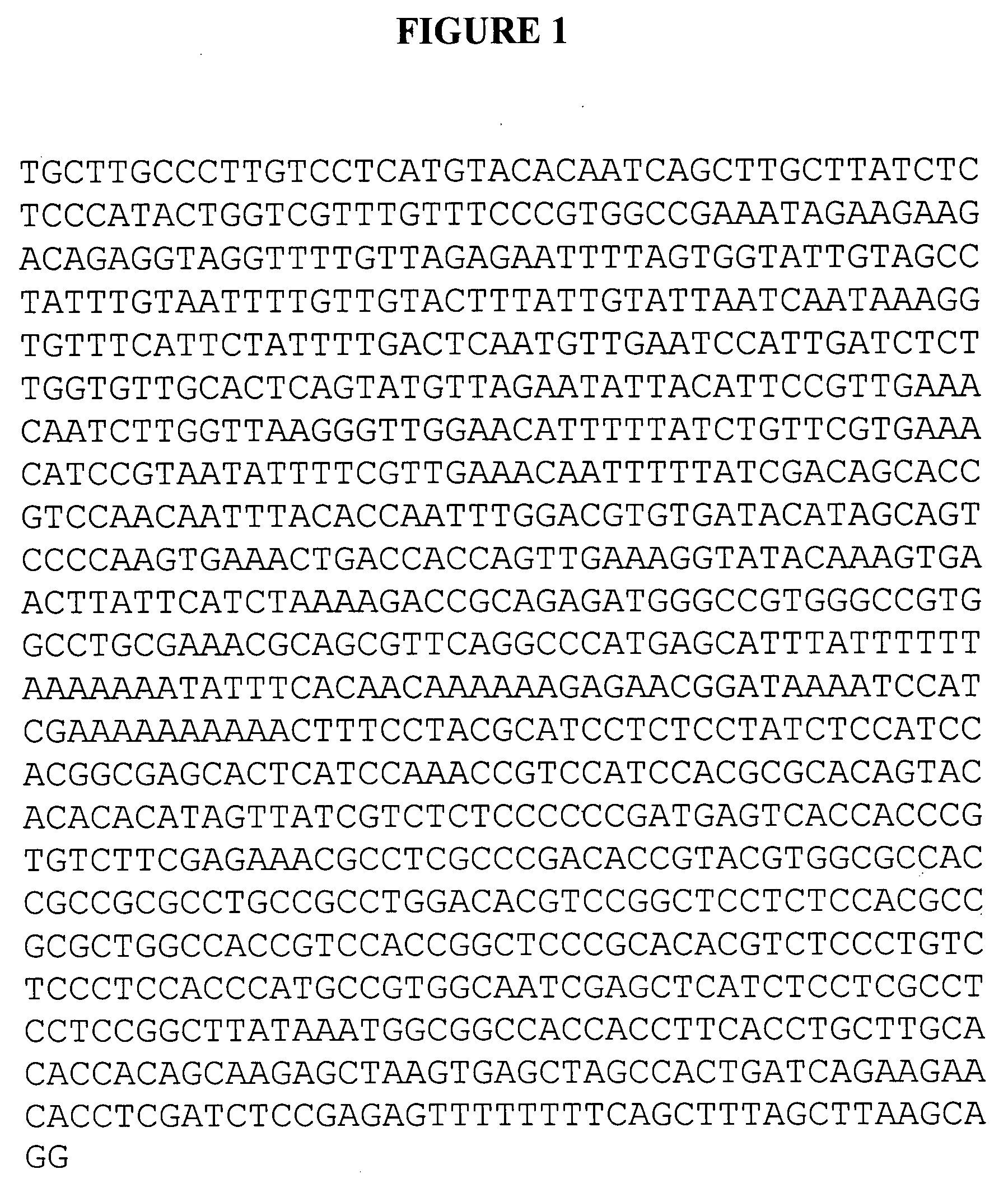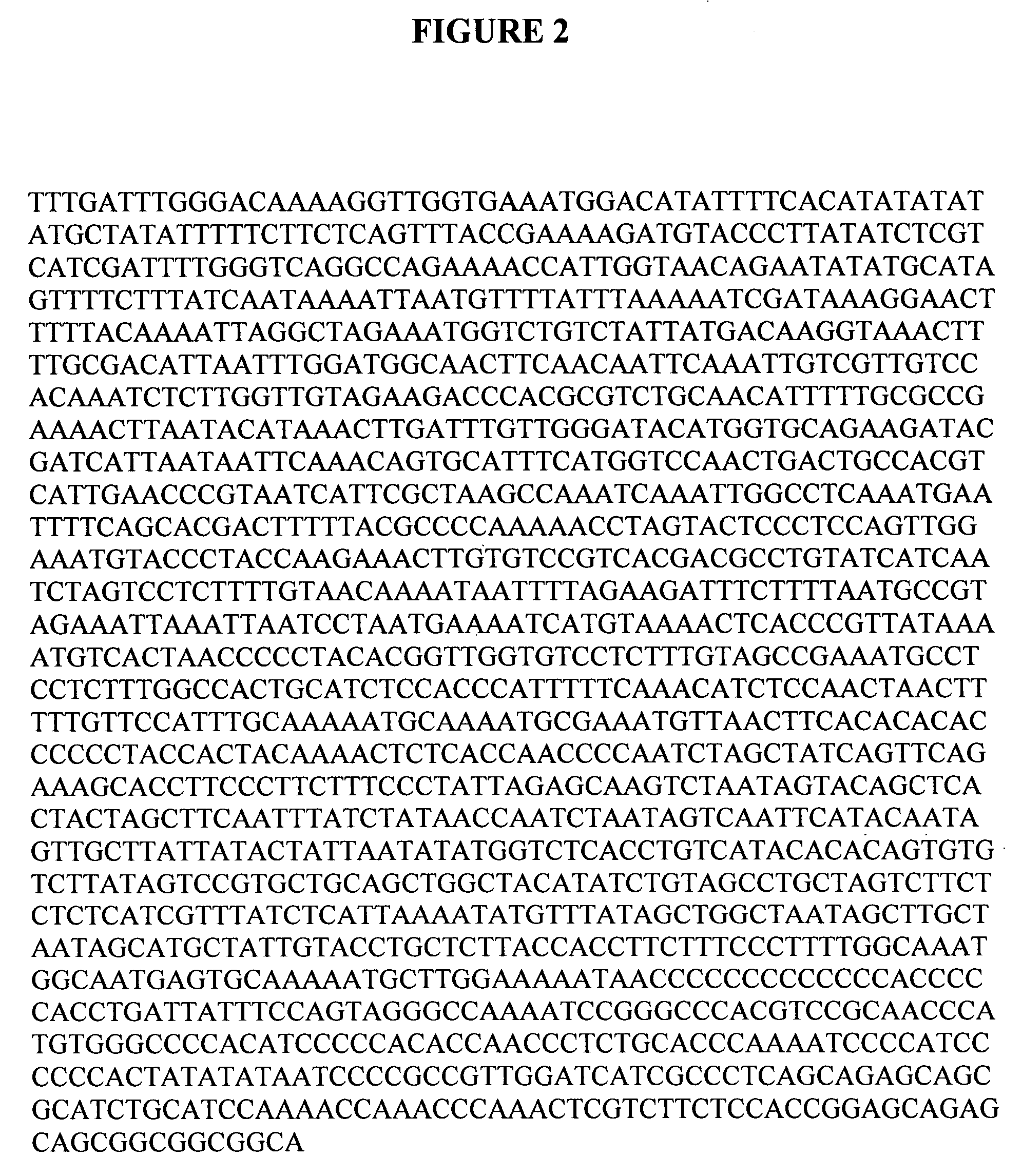Stress-inducible plant promoters
a plant promoter and stress-inducible technology, applied in the field of molecular biology, can solve the problems of increased susceptibility to disease and pests, reduced yield, adverse effects on plants, etc., and achieve the effects of enhancing nutrient utilization, enhancing grain composition or quality, and enhancing nutrient transporter functions
- Summary
- Abstract
- Description
- Claims
- Application Information
AI Technical Summary
Benefits of technology
Problems solved by technology
Method used
Image
Examples
example 1
Promoter Sequences
[0111] This example is a non-limiting example of promoter sequences and derivative promoter sequences of the invention. More specifically, this example illustrates the identification of maize (Zea mays) genes which showed increased expression under stress conditions (for example, water deficit) (described in detail in U.S. patent application Ser. No. 10 / 739565 to Hinchey et al., filed 18 Dec. 2003 and published as U.S. Patent Application Publication 2004 / 0123347, incorporated herein by reference in its entirety) and the use of these maize gene sequences to identify and isolate novel stress-inducible promoters from rice.
[0112] Maize lines were field-grown under non-irrigated (water-deficit-producing) or irrigated (well-watered) conditions. Water-deficit conditions were achieved by growing in a geographical location in which rainfall was usually limiting, and, if needed, by withholding irrigation. Leaf samples were taken from plants before the tassel stage for each...
example 2
DNA Constructs
[0116] This example is a non-limiting example of DNA constructs of the present invention. More particularly, this example illustrates the construction of transformation vectors comprising a stress-inducible 5′ regulatory region derived from the rice RAB17 (SEQ ID NO:1), CA4H (SEQ ID NO:2), HVA22 (SEQ ID NO:3), HSP17.5 (SEQ ID NO:4), HSP22 (SEQ ID NO:5), or HSP16.9 (SEQ ID NO:6) promoters. In each case, the full length promoter, as well as fragments of the promoter, are isolated and operably linked to a reporter gene, or any other gene, for testing promoter activity.
[0117] A non-limiting example of a preferred reporter gene for monitoring promoter activity is the uidA screenable marker gene (Jefferson et al., Proc. Natl. Acad. Sci. USA, 83(22):8447-8451, 1986; Jefferson, Plant Mol. Biol. Rep., 5:387-405, 1987). As is well known to those skilled in the art, when the uidA gene is operably linked to a functional promoter, the uidA gene product (commonly referred to as GU...
example 3
Transgenic Plants
[0120] This example is a non-limiting example of methods to provide transgenic plants of the present invention. More particularly, this example illustrates biolistic transformation of maize (corn) with DNA constructs comprising stress-inducible promoters. Biolistic transformation involves the adherence of the selected DNA to microparticles which are then introduced into recipient cells at high velocity. The bombarded cells are then allowed to recover and regenerate on various media until they are of suitable condition for regeneration into plants, preferably fertile plants. Biolistic transformation methods for maize are known to those of skill in the art.
[0121] DNA coated microprojectiles are prepared with adherent DNA constructs prepared as in Example 2 and the particles are bombarded into maize cells. Fertile transgenic plants are produced from transformed maize cells. Regenerated R0 and R1 plants (or plants from any other generation of interest) from a number o...
PUM
| Property | Measurement | Unit |
|---|---|---|
| stress-inducible promoter activity | aaaaa | aaaaa |
| nucleic acid sequence | aaaaa | aaaaa |
| insect resistance | aaaaa | aaaaa |
Abstract
Description
Claims
Application Information
 Login to View More
Login to View More - R&D
- Intellectual Property
- Life Sciences
- Materials
- Tech Scout
- Unparalleled Data Quality
- Higher Quality Content
- 60% Fewer Hallucinations
Browse by: Latest US Patents, China's latest patents, Technical Efficacy Thesaurus, Application Domain, Technology Topic, Popular Technical Reports.
© 2025 PatSnap. All rights reserved.Legal|Privacy policy|Modern Slavery Act Transparency Statement|Sitemap|About US| Contact US: help@patsnap.com



